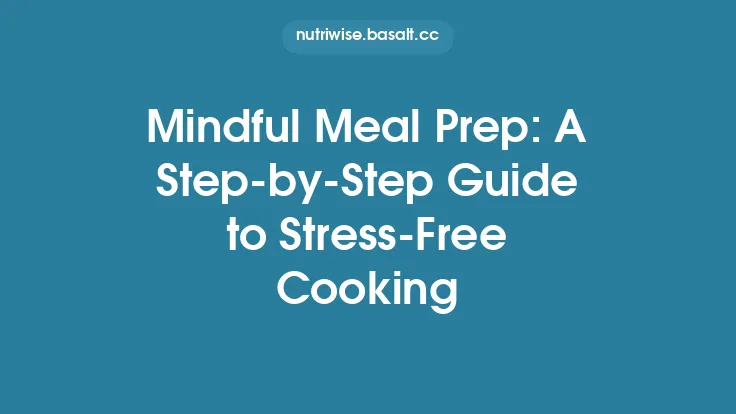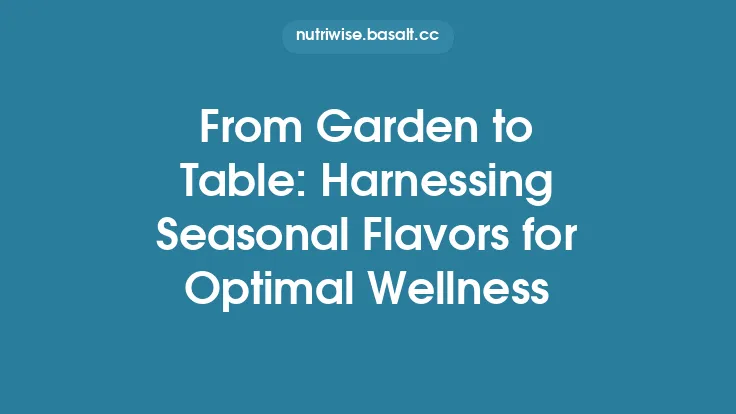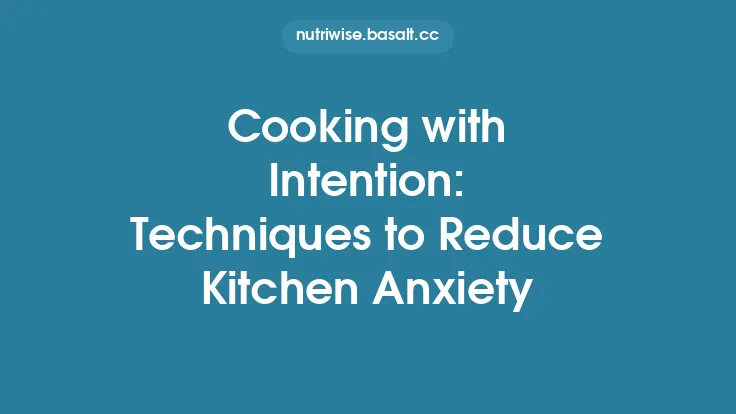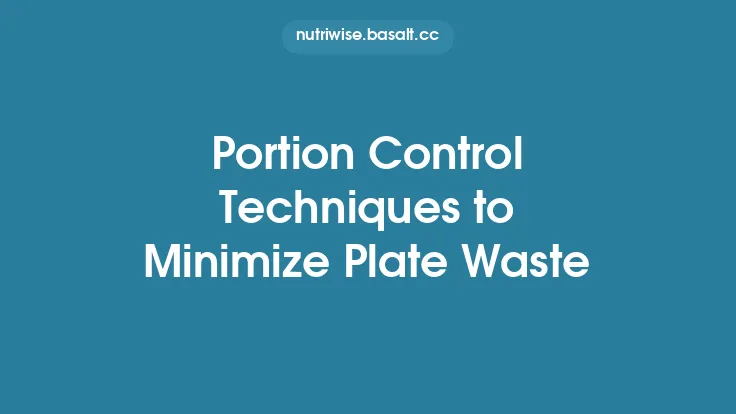The kitchen can feel like a battlefield when the clock is ticking, the pantry is a maze, and the list of dishes seems endless. Yet, the very space where we transform raw ingredients into nourishment also holds the potential to become a sanctuary for calm and focus. By embedding intentional, repeatable rituals into every stage of the cooking process—starting from the moment you step into the kitchen and ending when the last plate is cleared—you can dramatically lower physiological stress markers, improve the quality of your meals, and cultivate a sustainable sense of ease that extends far beyond the stove.
Establishing a Pre‑Cooking Sanctuary
1. Light and Atmosphere
Natural daylight is the most effective regulator of circadian rhythms, which in turn influences cortisol production. Whenever possible, position your primary work surface near a window and keep blinds partially open to let soft, diffused light flood the area. If natural light is unavailable, opt for full‑spectrum LED bulbs set to a warm 2,700–3,000 K temperature; these mimic the hue of early evening sunlight and have been shown to reduce sympathetic nervous system activity.
2. Soundscape Management
Acoustic environments impact heart‑rate variability (HRV), a key indicator of stress resilience. Curate a low‑volume playlist of instrumental music with a tempo of 60–80 bpm—roughly matching a resting heart rate—to promote parasympathetic dominance. Avoid sudden spikes in volume or aggressive genres that can trigger startle responses.
3. Air Quality and Aromatics
Airborne particulates and strong odors can exacerbate stress. Use a small HEPA filter or an exhaust fan to maintain clean air circulation. Introducing a subtle, calming scent such as lavender or chamomile via a diffuser can lower perceived stress without overwhelming the palate, provided the aroma does not interfere with the flavors of the dish.
4. Physical Preparation
Begin with a brief, purposeful body scan: straighten your posture, roll your shoulders back, and engage your core. This simple alignment reduces muscular tension and improves breathing efficiency, setting a physiological baseline for a calmer cooking session.
Ritualized Ingredient Handling
1. Intentional Washing
Treat the act of washing produce as a grounding ritual. Fill a basin with cool, filtered water and add a splash of white vinegar (1 part vinegar to 4 parts water) to reduce microbial load. Submerge each item, gently agitate, and then lay them on a clean towel to air‑dry. This method not only ensures safety but also creates a tactile pause that separates you from the mental rush of the upcoming tasks.
2. Visual Sorting and Color Coding
Arrange ingredients by color and type on a clean countertop or cutting board. This visual organization reduces cognitive load by providing an immediate, at‑a‑glance inventory. For example, place all green vegetables together, followed by reds, then neutrals. The act of sorting reinforces a sense of control and predictability.
3. Precision Cutting as a Flow State Trigger
Adopt a consistent knife grip—pinch the blade just behind the handle with the thumb and index finger while wrapping the remaining fingers around the handle. Maintain a uniform rocking motion, keeping the tip of the knife in contact with the board. This technique minimizes the need for corrective movements, reduces fatigue, and can induce a flow state akin to that experienced by professional chefs.
4. Temperature Confirmation
Use a calibrated instant‑read thermometer to verify the temperature of perishable items (e.g., fish, poultry) before cooking. Knowing that the protein is within a safe range (e.g., 145 °F for fish) eliminates the anxiety of under‑ or over‑cooking and allows you to focus on the process rather than the outcome.
Rhythmic Cooking Practices
1. Structured Timing Blocks
Divide the cooking session into discrete time blocks (e.g., 10‑minute prep, 15‑minute sauté, 5‑minute plating). Set a silent timer for each block; the audible cue signals a transition, reducing the need for constant clock‑watching. This compartmentalization aligns with the brain’s natural preference for chunked information, decreasing mental clutter.
2. Consistent Heat Management
Fluctuating burner temperatures cause both culinary inconsistency and stress. Use a digital induction cooktop with precise temperature settings (±1 °C) to maintain steady heat. For gas stoves, employ a flame‑stabilizer ring to distribute heat evenly across the pan’s base, preventing hot spots that demand constant adjustment.
3. Layered Flavor Development
Adopt a “build‑first, finish‑later” approach: begin by sautéing aromatics (onion, garlic, ginger) at a moderate temperature until translucent, then add proteins, followed by liquids and seasonings. This sequential layering reduces the need for simultaneous multitasking, allowing you to focus on one sensory input at a time.
4. Micro‑Break Integration
Incorporate brief, purposeful pauses (30–60 seconds) after each major step. Use this interval to stretch, sip water, or simply observe the aromas rising from the pan. These micro‑breaks lower cortisol spikes and improve overall concentration for the subsequent stage.
Strategic Use of Time and Tools
1. Mise en Place with a Twist
Traditional mise en place emphasizes readiness; enhance it by pre‑measuring spices into labeled silicone molds. This eliminates the need for on‑the‑fly calculations, which can trigger decision fatigue. Store the molds in a magnetic strip on the side of the prep area for quick visual access.
2. Smart Appliance Synchronization
Leverage Wi‑Fi‑enabled devices (e.g., smart ovens, sous‑vide circulators) that can be programmed from a smartphone app. Set the oven to preheat while you finish chopping, and receive a push notification when the target temperature is reached. This automation reduces the mental burden of monitoring multiple variables.
3. Ergonomic Tool Selection
Choose utensils that match your hand size and grip strength. A well‑balanced chef’s knife reduces wrist strain, while a lightweight silicone spatula minimizes shoulder fatigue during prolonged stirring. Ergonomic comfort directly correlates with lower perceived stress during repetitive motions.
4. Parallel Processing with Safety Nets
When cooking multiple components simultaneously, assign each to a dedicated burner or appliance and label them with color‑coded silicone bands. This visual cue prevents cross‑contamination and accidental over‑cooking, allowing you to manage several dishes without the anxiety of forgetting a step.
Mindful Plate Presentation
1. Temperature Contrast
Serve hot foods on pre‑warmed plates (heated in a low oven at 150 °F for 5 minutes) and cold dishes on chilled plates (refrigerated for 10 minutes). The temperature contrast enhances mouthfeel and signals to the brain that the meal is ready, reducing the urge to repeatedly check the food.
2. Structured Plating Geometry
Adopt a simple geometric framework: place the protein at the 12‑o’clock position, a vegetable medley at 4‑o’clock, and a carbohydrate at 8‑o’clock on a circular plate. This predictable layout reduces decision fatigue during plating and creates a visually balanced dish that promotes a sense of order.
3. Controlled Garnish Application
Measure garnishes (e.g., herbs, citrus zest) using a calibrated micro‑scoop (0.5 g increments). Consistent garnish amounts prevent over‑seasoning, which can lead to post‑meal regret—a subtle source of stress. The act of measuring also reinforces a calm, methodical mindset.
4. Immediate Sensory Appreciation
Before the first bite, pause for a brief visual and olfactory appraisal. Acknowledge the colors, aromas, and textures without judgment. This short, intentional pause signals the brain to transition from a task‑oriented mode to a reward‑oriented mode, fostering satisfaction and reducing lingering tension.
Post‑Meal Reset and Reflection
1. Clean‑as‑You‑Go Protocol
Adopt a “one‑pot‑one‑clean” rule: after each cooking step, place used utensils and cookware into a designated sink zone. Rinse with warm water and add a few drops of dish‑soap, allowing them to soak while you continue cooking. This prevents a mountain of dishes at the end, which is a common stress trigger.
2. Structured Dishwashing Cycle
When the meal is complete, follow a three‑stage washing routine: (a) pre‑rinse all items under running water, (b) soak in a basin with hot, sudsy water for 2 minutes, and (c) scrub and rinse. The predictable sequence reduces the mental load of deciding where to start and creates a rhythm that can be soothing.
3. Kitchen Reset Checklist
Create a concise checklist (e.g., “Wipe countertops, empty trash, turn off appliances, store leftovers”) and run through it methodically. Checking off each item provides a tangible sense of accomplishment and signals the brain that the cooking episode has officially concluded.
4. Brief Reflective Journaling
Spend 2–3 minutes noting any observations: what went smoothly, what could be refined, and any moments of unexpected calm. Recording these insights reinforces positive neural pathways associated with stress‑reduced cooking and builds a personal knowledge base for future meals.
By weaving these purposeful rituals into the fabric of everyday cooking, you transform the kitchen from a source of frantic activity into a structured, calming environment. The cumulative effect of consistent lighting, sound, airflow, ergonomic tools, timed workflows, and reflective practices not only lowers acute stress responses but also cultivates a lasting habit of culinary tranquility. Over time, these evergreen strategies become second nature, allowing you to approach each meal with confidence, clarity, and a renewed sense of well‑being.





